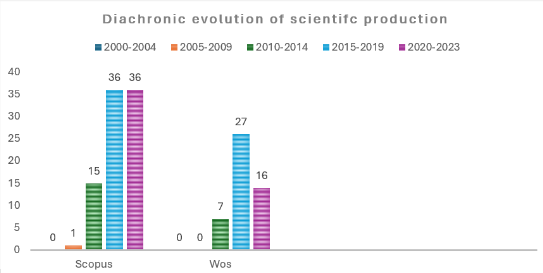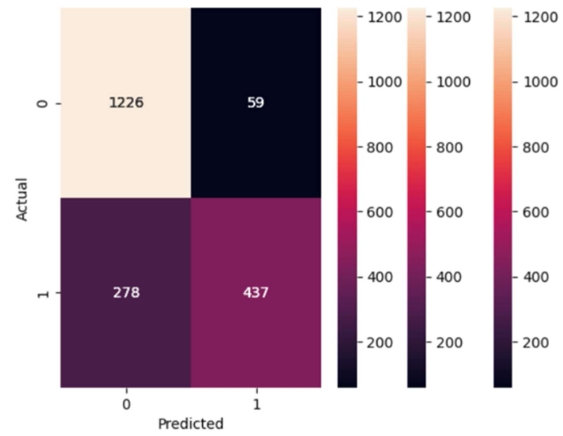Enhancing adult learner success in higher education through decision tree models: A machine learning approach
Abstract
This article explores the use of machine learning, specifically Classification and Regression Trees (CART), to address the unique challenges faced by adult learners in higher education. These learners confront socio-cultural, economic, and institutional hurdles, such as stereotypes, financial constraints, and systemic inefficiencies. The study utilizes decision tree models to evaluate their effectiveness in predicting graduation outcomes, which helps in formulating tailored educational strategies. The research analyzed a comprehensive dataset spanning the academic years 2013–2014 to 2021–2022, evaluating the predictive accuracy of CART models using precision, recall, and F1 score. Findings indicate that attendance, age, and Pell Grant eligibility are key predictors of academic success, demonstrating the strong capability of the model across various educational metrics. This highlights the potential of machine learning (ML) to improve data-driven decision-making in educational settings. The results affirm the effectiveness of Decision Tree (DT) models in meeting the educational needs of adult learners and underscore the need for institutions to adapt their strategies to provide more inclusive and supportive environments. This study advocates for a shift towards nuanced, data-driven approaches in higher education, emphasizing the development of strategies that address the distinct challenges of adult learners, aiming to enhance inclusivity and support within the sector.
References
[1]Job MA, Pandey J. Academic Performance Analysis Framework for Higher Education by Applying Data Mining Techniques. In: Proceedings of the 2020 8th International Conference on Reliability, Infocom Technologies and Optimization (Trends and Future Directions) (ICRITO); 4–5 June 2020; Noida, India. pp. 1145–1149. doi: 10.1109/icrito48877.2020.9197925
[2]Caspari-Sadeghi S. Learning assessment in the age of big data: Learning analytics in higher education. Cogent Education. 2022; 10(1). doi: 10.1080/2331186x.2022.2162697
[3]Ryan RM, Deci EL. Self-determination theory and the facilitation of intrinsic motivation, social development, and well-being. American Psychologist. 2000; 55(1): 68–78. doi: 10.1037/0003-066x.55.1.68
[4]Nieto Y, García-Díaz V, Montenegro C, et al. Supporting academic decision making at higher educational institutions using machine learning-based algorithms. Soft Computing. 2018; 23(12): 4145–4153. doi: 10.1007/s00500-018-3064-6
[5]Musso MF, Hernández CFR, Cascallar EC. Predicting key educational outcomes in academic trajectories: A machine-learning approach. Higher Education. 2020; 80(5): 875–894. doi: 10.1007/s10734-020-00520-7
[6]Teng Y, Zhang J, Sun T. Data‐driven decision‐making model based on artificial intelligence in higher education system of colleges and universities. Expert Systems. 2022; 40(4). doi: 10.1111/exsy.12820
[7]Alkhalil A, Abdallah MAE, Alogali A, et al. Applying Big Data Analytics in Higher Education. International Journal of Information and Communication Technology Education. 2021; 17(3): 29–51. doi: 10.4018/ijicte.20210701.oa3
[8]Chaurasia SS, Kodwani D, Lachhwani H, et al. Big data academic and learning analytics. International Journal of Educational Management. 2018; 32(6): 1099–1117. doi: 10.1108/ijem-08-2017-0199
[9]National Student Clearinghouse Research Center. Some college, no credential student Outcomes: Annual progress report—academic year—2021/22. Available online: https://nscresearchcenter.org/some-college-no-credential/ (accessed on 1 June 2024).
[10]Sadiq MH, Ahmed NS. Classifying and Predicting Students’ Performance using Improved Decision Tree C4.5 in Higher Education Institutes. Journal of Computer Science. 2019; 15(9): 1291–1306. doi: 10.3844/jcssp.2019.1291.1306
[11]Yağcı M. Educational data mining: prediction of students’ academic performance using machine learning algorithms. Smart Learning Environments. 2022; 9(1). doi: 10.1186/s40561-022-00192-z
[12]Hamoud AK, Hashim AS, Awadh WA. Predicting Student Performance in Higher Education Institutions Using Decision Tree Analysis. International Journal of Interactive Multimedia and Artificial Intelligence. 2018; 5(2): 26. doi: 10.9781/ijimai.2018.02.004
[13]Marzuqi A, Laksitowening KA, Asror I. Temporal Prediction on Students’ Graduation using Naïve Bayes and K-Nearest Neighbor Algorithm. Jurnal Media Informatika Budidarma. 2021; 5(2): 682. doi: 10.30865/mib.v5i2.2919
[14]Widaningsih S, Muhamad W, Hendriyanto R, et al. An ID3 Decision Tree Algorithm-Based Model for Predicting Student Performance Using Comprehensive Student Selection Data at Telkom University. Ingénierie des systèmes d information. 2023; 28(5): 1205–1212. doi: 10.18280/isi.280508
[15]Quinlan JR. Induction of decision trees. Machine Learning. 1986; 1(1): 81–106. doi: 10.1007/bf00116251
[16]Gotardo MA. Using Decision Tree Algorithm to Predict Student Performance. Indian Journal of Science and Technology. 2019; 12(8): 1–8. doi: 10.17485/ijst/2019/v12i5/140987
[17]Alsariera YA, Baashar Y, Alkawsi G, et al. Assessment and Evaluation of Different Machine Learning Algorithms for Predicting Student Performance. Computational Intelligence and Neuroscience. 2022; 2022: 1–11. doi: 10.1155/2022/4151487
[18]Martins M, Miguéis V, Fonseca D, Alves A. A data mining approach for predicting academic success: A case study. In: Rocha AC, Ferrás M (editors). Information Technology and Systems: Advances in Intelligent Systems and Computing. Springer; 2019. Volume 918. pp. 45–56. https://doi.org/10.1007/978-3-030-11890-7_5
[19]Garg A, Lilhore UK, Ghosh P, et al. Machine Learning-based Model for Prediction of Student’s Performance in Higher Education. In: Proceedings of the 2021 8th International Conference on Signal Processing and Integrated Networks (SPIN); 26–27 August 2021; Noida, India. pp. 162–168. doi: 10.1109/spin52536.2021.9565999
[20]Ahmad Tarmizi SS, Mutalib S, Abdul Hamid NH, et al. A case study on student attrition prediction in higher education using data mining techniques. In: Berry M, Yap B, Mohamed A, Köppen M (editors). Soft Computing in Data Science, Proceedings of the 5th International Conference, SCDS 2019; 28–29 August 2019; Iizuka, Japan. Springer; 2019. pp. 181–192. doi: 10.1007/978-981-15-0399-3_15
[21]Ivanov A. Decision Trees for Evaluation of Mathematical Competencies in the Higher Education: A Case Study. Mathematics. 2020; 8(5): 748. doi: 10.3390/math8050748
[22]Crismayella Y, Satyahadewi N, Perdana H. Algoritma Adaboost pada Metode Decision Tree untuk Klasifikasi Kelulusan Mahasiswa. Jambura Journal of Mathematics. 2023; 5(2): 278–288. doi: 10.34312/jjom.v5i2.18790
[23]Nguyen MK, Huynh VT, Nguyen HD. Predicting graduation grades using Machine Learning: A case study of Can Tho University students. CTU Journal of Innovation and Sustainable Development. 2023; 15(ISDS): 83–92. doi: 10.22144/ctujoisd.2023.038
[24]Акмеше ОФ, Кьор Х, Ербей Х. Use of machine learning techniques for the forecast of student achievement in higher education. Information Technologies and Learning Tools. 2021; 82(2): 297–311. doi: 10.33407/itlt.v82i2.4178
[25]Zhou J, Ye J min. Sentiment analysis in education research: A review of journal publications. Interactive Learning Environments. 2020; 31(3): 1252–1264. doi: 10.1080/10494820.2020.1826985
[26]Oreški D, Zamuda D. Machine Learning Based Model for Predicting Student Outcomes. In: Proceedings of the International Conference on Industrial Engineering and Operations Management; 7–10 March 2022; Istanbul, Turkey. pp. 4884–4894. doi: 10.46254/an12.20220967
[27]Khor ET. A data mining approach using machine learning algorithms for early detection of low-performing students. The International Journal of Information and Learning Technology. 2022; 39(2): 122–132. doi: 10.1108/ijilt-09-2021-0144
[28]Yan J, Chi X. Analysis and Prediction of College Students’ Employment based on Decision Tree Classification Algorithm. In: Proceedings of the 2023 International Conference on Distributed Computing and Electrical Circuits and Electronics (ICDCECE); 29–30 April 2023; Ballar, India. doi: 10.1109/icdcece57866.2023.10150841
[29]Meng Z. Analysis and Prediction of College Students’ Employment Based on Decision Tree Classification Algorithm. In: Proceedings of the 2023 World Conference on Communication & Computing (WCONF); 14–16 July 2023; RAIPUR, India. doi: 10.1109/wconf58270.2023.10234985
[30]Pradana MG, Rangga Pinastawa IW, Maulana N, et al. Performance Analysis of Tree-Based Algorithms in Predicting Employee Attrition. CCIT Journal. 2023; 16(2): 220–232. doi: 10.33050/ccit.v16i2.2580
[31]Yin L. The Application of Improved Decision Tree Algorithm in College Employment Management. In: Proceedings of the 2023 3rd Asian Conference on Innovation in Technology (ASIANCON); 25–27 August 2023; Ravet IN, India. doi: 10.1109/asiancon58793.2023.10270643
[32]Muzumdar P, Basyal GP, Vyas P. An Empirical Comparison of Machine Learning Models for Student’s Mental Health Illness Assessment. Asian Journal of Computer and Information Systems. 2022; 10(1). doi: 10.24203/ajcis.v10i1.6882
[33]Battista K, Diao L, Patte KA, et al. Examining the use of decision trees in population health surveillance research: An application to youth mental health survey data in the COMPASS study. Health Promotion and Chronic Disease Prevention in Canada. 2023; 43(2): 73–86. doi: 10.24095/hpcdp.43.2.03
[34]Li H. Analysis of mental health influencing factors and students’ psychological education countermeasures based on ID3 algorithm. Applied Mathematics and Nonlinear Sciences. 2023; 9(1). doi: 10.2478/amns.2023.2.01377
[35]Xiaocheng H. Application of Decision Tree Algorithm in College Students’ Mental Health Evaluation. In: Proceedings of the 2023 IEEE International Conference on Integrated Circuits and Communication Systems (ICICACS); 24–25 February 2023; Raichur, India. doi: 10.1109/icicacs57338.2023.10099654
[36]Krishnan R, Kumari S, Badi AA, et al. Predictive machine learning model for mental health issues in higher education students due to COVID-19 using HADS assessment. Arab Gulf Journal of Scientific Research. 2023. doi: 10.1108/agjsr-01-2023-0034
[37]Rueda E, Lowe Swift C. Academic Belonging in Higher Education. Routledge; 2023. doi: 10.4324/9781003443735
[38]Salihoun M. State of Art of Data Mining and Learning Analytics Tools in Higher Education. International Journal of Emerging Technologies in Learning (IJET). 2020; 15(21): 58. doi: 10.3991/ijet.v15i21.16435
[39]Tahiru F, Parbanath S, Agbesi S. Machine Learning-based Predictive Systems in Higher Education: A Bibliometric Analysis. Journal of Scientometric Research. 2023; 12(2): 436–447. doi: 10.5530/jscires.12.2.040
[40]Mao H, Fang Z, Xia Z. Model of the influence of students’ participation on learning effects using educational artificial intelligence. In: Proceedings of the 2023 8th International Conference on Cloud Computing and Big Data Analytics (ICCCBDA); 26-28 April 2023; Chengdu, China. pp. 512–515. doi: 10.1109/icccbda56900.2023.10154663
[41]Pinto AS, Abreu A, Costa E, et al. How Machine Learning (ML) is Transforming Higher Education: A Systematic Literature Review. Journal of Information Systems Engineering and Management. 2023; 8(2). doi: 10.55267/iadt.07.13227
[42]Feng L. Research on Higher Education Evaluation and Decision-Making Based on Data Mining. Scientific Programming. 2021; 2021: 1–9. doi: 10.1155/2021/6195067
[43]Jacob D, Henriques R. Educational Data Mining to Predict Bachelors Students’ Success. Emerging Science Journal. 2023; 7: 159–171. doi: 10.28991/esj-2023-sied2-013
[44]Attiya WM, Shams MB. Predicting Student Retention in Higher Education Using Data Mining Techniques: A Literature Review. In: Proceedings of the 2023 International Conference On Cyber Management and Engineering (CyMaEn); 26–27 January 2023; Bangkok, Thailand. pp. 171–177. doi: 10.1109/cymaen57228.2023.10051056
[45]Gafarov MF, Okishev KY, Makovetskiy AN, et al. Construction of Models for Predicting the Microstructure of Steels after Heat Treatment Using Machine Learning Methods. Steel in Translation. 2023; 53(11): 1120-1129. doi: 10.3103/S0967091223110104
[46]Chen R. Research on the development path of higher education model innovation based on quadratic planning algorithm. Applied Mathematics and Nonlinear Sciences. 2023; 9(1). doi: 10.2478/amns.2023.2.01100
Copyright (c) 2024 Emily Barnes, James Hutson, Karriem Perry

This work is licensed under a Creative Commons Attribution 4.0 International License.









